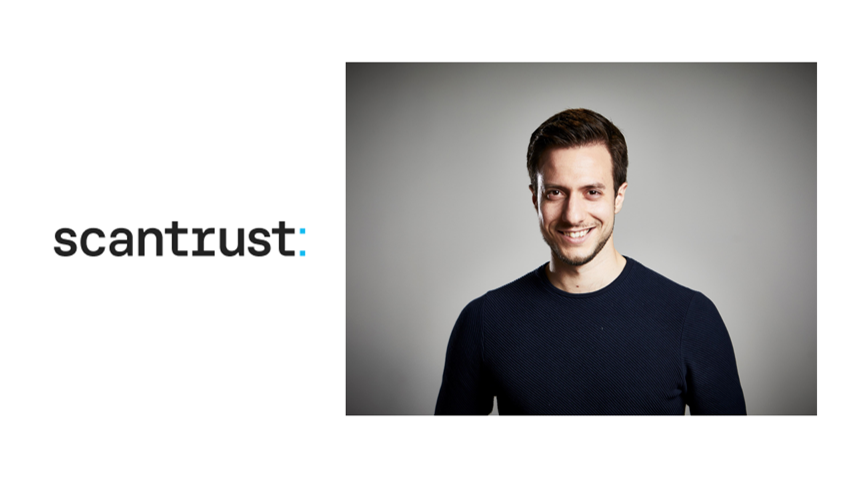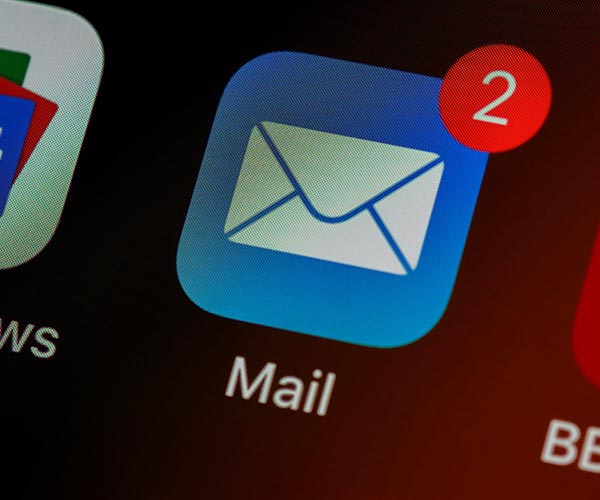Linking physical products digitally with consumers
Katharina Kittelberger
Trust is good; Scantrust is better. Founded in 2014, the Swiss startup offers brands the opportunity to link their products digitally, via QR codes on the packaging with end consumers. Through this connected packaging, end-users can learn more about the products they buy as a "Quick Reponse."
For instance, Ricardo Garcia, Head of Partnerships & Blockchain Advisory, also describes that "we primarily offer digitization for physical products." In an interview with 5-HT, he shares how Scantrust brings these physical products online with networked packaging.
 Ricardo Garcia, Head of Partnerships & Blockchain Advisory at Scantrust
Ricardo Garcia, Head of Partnerships & Blockchain Advisory at ScantrustMore than a vision: The focus areas
Scantrust enables consumers to secure, track and create interactivity with their respective products. But not only that: Through the specifically secured QR code, moreover, combat counterfeiting. All this enables transparent tracking and product protection in the supply chain. This way, not only brands but also end-users know from where a specific product is coming. "Ultimately," says Ricardo, "we're about building digital communication to our end-user through packaging and building trust in a brand."
Scantrust achieves this process with the help of its unique technology. In the following, Ricardo describes in detail which two aspects contribute to this.
More than a QR code: The USP
"On the one hand, we have developed a system that makes it possible to assign an individual QR code to every single physical product. With this," he adds, "we can track each product along its entire lifecycle, enabling the use cases already described."
On the other hand, Scantrust has developed a patented technology that makes it possible not only to customize the QR code and manage it in the platform. "This is done by means of a special graphic placed in the center of the QR code," Ricardo adds. Not only does this make the QR code immune to copying, but it can also be verified at any time whether the product is genuine or counterfeit.
 Three ways to bring physical items online
Three ways to bring physical items onlineFor which group does it make sense to use such QR codes?
"We focus on two pillars," Ricardo explains, "namely industrial and consumer goods." In addition to mechanical and plant engineering, industrial goods also include the chemical, electrical engineering, automotive, mineral oil, and agrochemical sectors. "In summary, this includes all those customers who produce a branded product that is exported globally. Often the "end consumer" of the product is a professional end user, such as a mechanic or technician," he adds.
Scantrust counts food, beverages, cosmetics and "a few luxury goods among the consumer goods. Here, the primary goal is to establish a digital channel via the individual code to the end user, to show him the origin of the product or whether the product is genuine or counterfeit," says Ricardo.
How does Scantrust monetize this process?
"Our business model," he begins, "is based on three areas: First, we run a platform for each individual QR code. Here, customers pay an annual license fee that varies depending on the functionalities customers use. In addition, we charge a fee per code, not least because each QR code has a digital ID that lives in our system and is maintained for several years.
Ultimately," Ricardo concludes, "we charge a one-time fee for the entire implementation of the software."
Is there a specific example that describes your scope?
"Certainly. We currently have a project in Europe where our QR code is engraved on an automotive component. The important thing here and in all other projects is that there is not just one QR code per product line, but each individual product receives its own individual QR code. The aim of this is to create full transparency in the supply chain," explains Ricardo.
At any point in time, questions such as "When was the part manufactured?", "Where was it manufactured?" and "To which market was it originally delivered?" can be answered. "From the time the products are shipped," he adds, "the supply chain information is linked to this individual code. This allows our customer to combat gray market activity and achieve improved supply chain visibility."
"What makes us fundamentally unique are three things,"
says Ricardo. "Starting with the patented technology mentioned earlier, our model has other advantages as well. For example, not only can the QR codes be printed with conventional packaging machines, but they can also be conveniently verified with a cell phone."
However, he cites the go-to-market aspect as the third main distinguishing feature. There are different providers, but the quality of service is usually one of the deciding factors. This is where we stand out, not least because of our strong team," he emphasizes.
"We have often won projects because the employees involved in them have built a better connection with the customer."
In addition to this, it is also the collected experience that characterizes Scantrust. Especially in Asia, Scantrust already won some projects and worked with many customers in the following. "One last concrete example to measure our success so far is probably our partners and references," Ricardo concludes. "We now have many big names in our customer base, which gives us a lot of credibility."
"We are enormously proud of this customer base in particular."
Your success story so far is impressive. Will it continue to go steeply uphill?
"We hope so," grins Ricardo. "By having a product as well as a large clientele, we currently see ourselves as post-Series A. For us, the coming years are particularly about scaling and growing strongly," he explains.
"Looking at a five-year time horizon," Ricardo adds, "we want to be the leading provider of connected packaging."
"We want to be the first to be thought of when it comes to connected packaging."
In addition, Scantrust plans to increase its focus on the DACH region and Asia, where it has generated the most revenue to date.
Can 5-HT help you in this respect?
"For sure," Ricardo emphasizes. "A network like 5-HT is a tremendous opportunity for us. Especially to become better known in the DACH region, because this is where we would like to establish ourselves more in the future. The focus of 5-HT on the chemical and healthcare industry is equally interesting for us, because this is exactly one of our target industries. In this context, we hope to meet potential customers through your events."
In general, Scantrust rates 5-HT as a "super initiative. Such a huge network where startups can get in touch with companies and investors through match-making processes is hugely valuable."
"Our wish for politicians: To expand initiatives like the Digital Hub further and to invest even more."
"Because only in this way," Ricardo continues, "will it be easier for us as startups to gain a foothold in the industry as well."
5-HT Chemistry & Health Newsletter
Want the latest tech and industry news, events, relevant info from the ecosystem and more?
Subscribe to 5-HT Newsletter now Subscribe to 5-HT Newsletter now
Become part of the 5-HT Chemistry & Health
Exchange ideas with innovative startups and future-oriented companies in our ecosystem. We look forward to meeting you!